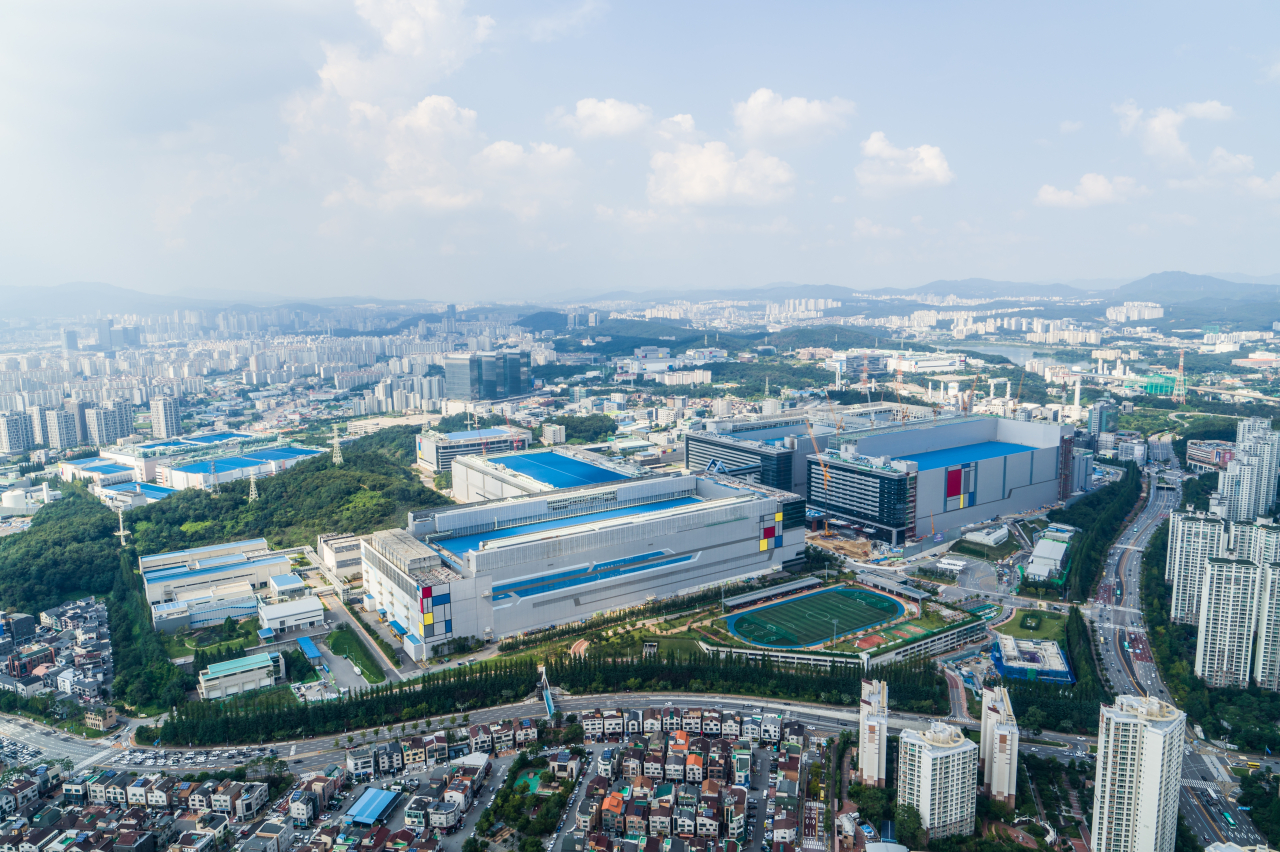[News Focus] Samsung’s edge in memory chips threatened?
Company confident in staving off challenges from smaller memory rivals, but long-term outlook remains a question
By Song Su-hyunPublished : Aug. 5, 2021 - 19:06

Amid the global chip race, news that Micron and SK hynix have developed the most advanced memory chips and are ready for their market debut have given rise to concern here that Samsung Electronics may be losing its leading edge in its core business.
Responsible for nearly 70 percent of its revenue, memory chips are the mainstay of Samsung, which alone account for about 70 percent of all operating profits earned by the country’s top 10 sales firms.
While Samsung stayed quiet on its technological advances or new investment plans, smaller rivals SK hynix and Micron respectively announced the development of new technologies and products -- DDR5 and 176-layer NAND products -- last year. SK hynix was also ahead of Samsung in announcing fourth-generation, 10-nanometer DRAM last month. Other rivals like Intel and Taiwan’s TSMC made headlines announcing massive new investment plans.
The silence was taken by some here as a sign that the tech giant, as de facto leader Lee Jae-yong is currently in jail, is failing to meet challenges head-on amid an ever-intensifying competition.
During its second-quarter earnings call last month, however, the chipmaker finally revealed its plans for mass production of the industry’s first High-K DDR5 and double-stack 176-layer NAND chips in the second half of the year, as scheduled.
“Currently, the company is mulling over the efficiency of the stack height, and cost-effectiveness of DDR5,” Han Jin-man, executive vice president of memory business at Samsung, said during the call.
Although Samsung was not the first to announce the debut of DDR5, it showed confidence in its achievement of integrating the DDR5 module with the new compute express link interconnect standard that could provide customers with higher speed and lower latency in communications between processors in devices.
Regarding Samsung’s late transition to the next-generation NAND chips, Han said, “The company’s single-stack 128-layer etching technology is widely recognized as the industry’s top level by the market, and with that technology, Samsung is capable of producing any products curtailed to customers’ needs at anytime.”
Samsung, now the world’s largest smartphone maker and key component supplier, has often deployed a follower strategy in the mantra of “wait until the market opens,” and has nailed that role time and again.
For instance, Samsung was not the first to develop a smartphone. It was a few years after the first iPhone launch in 2007 that Samsung released its first Galaxy smartphone. In the domestic market, it released a clothing care machine, first invented by its hometown rival LG Electronics, which was in the beginning mocked as a copycat.
However, what allowed Samsung to shrug off the longtime mockery of being a follower rather than an innovator is its confidence in the capability to secure robust profitability at an opportune moment.
In the second quarter of this year, Samsung’s mobile and consumer electronics businesses recorded remarkable sales. The smartphone unit posted 22.67 trillion won ($19.83 billion) in sales, while the consumer electronics unit posted 13.4 trillion won.
Its semiconductor revenue was 22.74 trillion won in the April to June period.
In its coverage of Samsung’s second-quarter earnings, the Wall Street Journal reported the Korean chipmaker overtook Intel as the world’s top chipmaker by revenue. Intel recorded $18.5 billion in second-quarter revenue. Samsung briefly held the position in 2017 and 2018 during the semiconductor “supercycle.”
For now, Samsung seems to know what to focus on, but it remains to be seen whether the strategy will work in the cutthroat chip competition in the long-term, pundits say.
“Samsung’s Q2 revenue only tells the memory market is at its boom time and Samsung knows where it is heading to,” an industry insider said.
The market appears to be not yet ready for the 176-layer NAND and DDR5 products that Micron and SK hynix are launching ahead of Samsung.
“What drove Samsung’s sales were DDR4 and 128-layer NAND chips in the first half of this year and they would continue to be the main drivers of the company’s sales throughout the year,” a Samsung official said. “It would take some more time to see the market move to DDR5 and 176-layer NAND.”
As for the comparison with Intel, the industry insider noted that Samsung and Intel have very different business portfolios.
“The comparison between Samsung and Intel does not carry much significance, given that Samsung and Intel are in totally different markets,” said the industry insider.
While major contributors to Samsung’s second-quarter revenue were DDR4 DRAM and Gen. 6 128-layer NAND products, Intel’s were processors for client computing, including the 11th-generation Intel Core with Iris Xe graphics and Xeon W-11000.
Intel racked up 47 percent growth in the internet of things business, cementing its position in the nonmemory sector.
Samsung’s system-on-chip business isn’t yet big enough to be compared to Intel’s, which is estimated at under 5 trillion won.
Memory sales accounted for nearly 80 percent of total semiconductors revenue at Samsung, market watchers said, with DRAM sales estimated at 10.9 trillion won and NAND sales at 7 trillion won.



![[AtoZ into Korean mind] Humor in Korea: Navigating the line between what's funny and not](http://res.heraldm.com/phpwas/restmb_idxmake.php?idx=644&simg=/content/image/2024/04/22/20240422050642_0.jpg&u=)


![[Exclusive] Korean military set to ban iPhones over 'security' concerns](http://res.heraldm.com/phpwas/restmb_idxmake.php?idx=644&simg=/content/image/2024/04/23/20240423050599_0.jpg&u=20240423183955)
![[Herald Interview] Why Toss invited hackers to penetrate its system](http://res.heraldm.com/phpwas/restmb_idxmake.php?idx=644&simg=/content/image/2024/04/22/20240422050569_0.jpg&u=20240422150649)
![[Graphic News] 77% of young Koreans still financially dependent](http://res.heraldm.com/phpwas/restmb_idxmake.php?idx=644&simg=/content/image/2024/04/22/20240422050762_0.gif&u=)






![[Exclusive] Korean military to ban iPhones over security issues](http://res.heraldm.com/phpwas/restmb_idxmake.php?idx=652&simg=/content/image/2024/04/23/20240423050599_0.jpg&u=20240423183955)



![[Today’s K-pop] Ateez confirms US tour details](http://res.heraldm.com/phpwas/restmb_idxmake.php?idx=642&simg=/content/image/2024/04/23/20240423050700_0.jpg&u=)